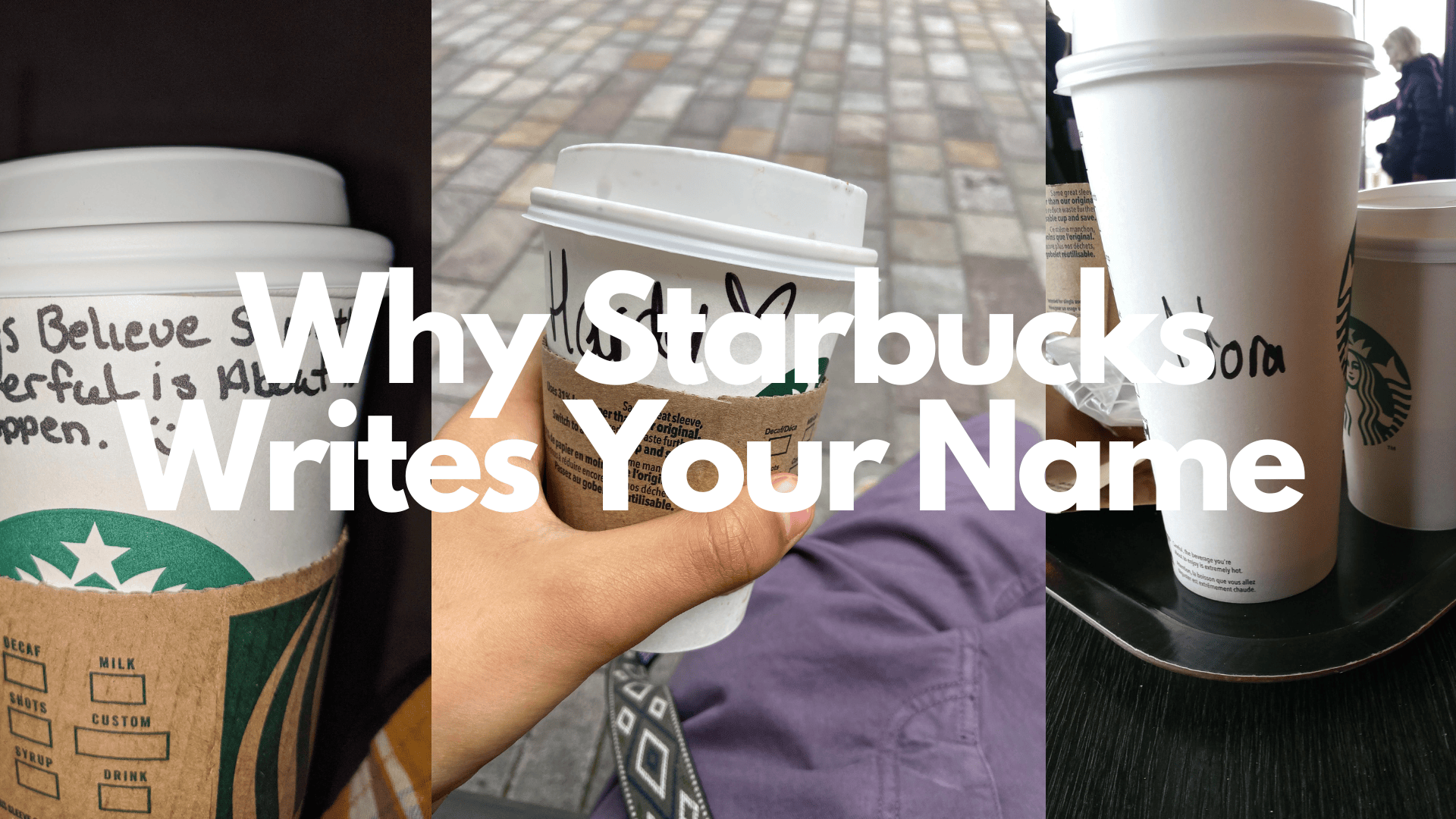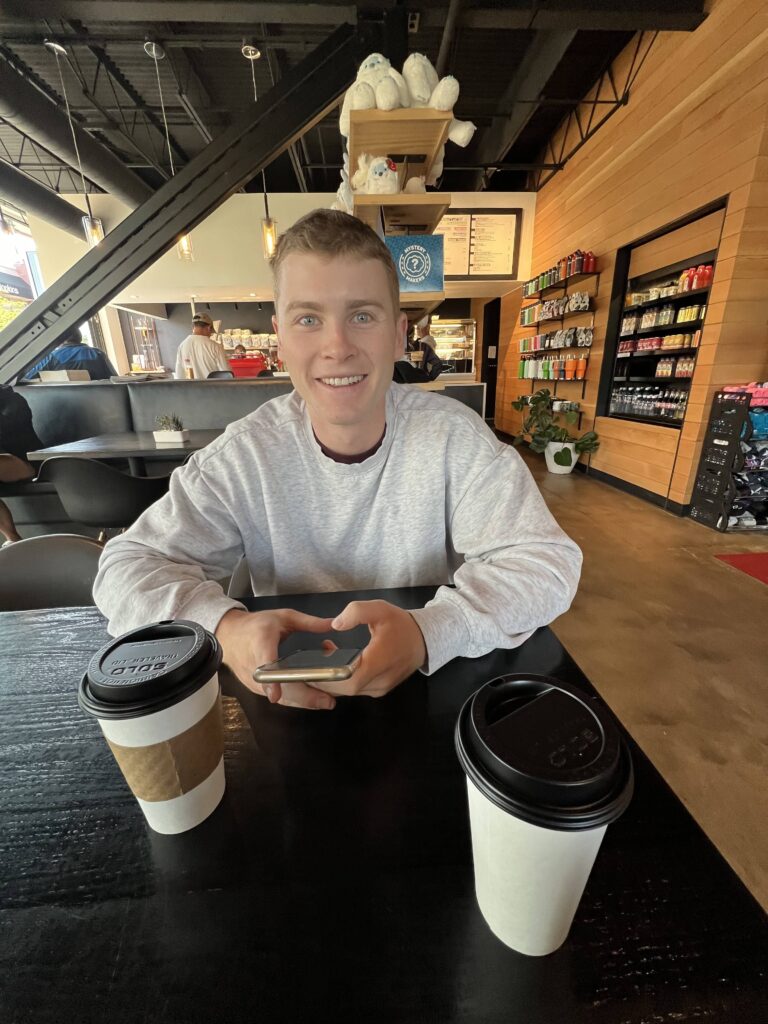Why Starbucks Writes Names on Cups

A key part of the Starbucks experience is grabbing your coffee cup with your name written on it in sharpy completely wrong.
I know you don’t need an English major to be a Starbucks barista, but how do you manage to misspell Josh? Sometimes it feels like they’re trying to misspell for the publicity.
Anyways! If you’re here, you’re probably wondering why Starbucks writes names on cups while other coffee shops don’t.
Starbucks began writing names on cups in 2012 to develop relationships and connect with customers on a first-name basis to make their drink order more than just a transaction. Names on cups also helps baristas remember and sort orders and keeps customers with similar orders from picking up the wrong one.
In the rest of this guide, we’ll cover the 2 main reasons why Starbucks always writes your name on your drink. Let’s get into it!


When Did Starbucks Start Writing Names on Cups?
While most people assume that Starbucks has always written customers’ names on their drink orders, the company, founded in 1971, actually didn’t begin doing it until March 2012.
As part of the “first name initiative” in 2012, Starbucks baristas also began wearing name badges with their own names on them.
But what caused Starbucks, a company that had been making coffee for over 40 years up to that point, to start using names?
Related: Learn why Starbucks coffee tastes burnt
Why Does Starbucks Write Your Name on the Cup?


To Create a Better Customer Experience
There are lots of coffee shops out there, and a lot of them make good coffee. Because of this, Starbucks attempts to differentiate itself and stand out from the coffee shop crowd by providing the best customer experience possible.
If a customer can get the same cup of coffee or tea at Starbucks as they can at Biggby, but they feel more appreciated and more part of a community at Starbucks, they’re going to get that drink from Starbucks.
But how does having your name on a cup make you feel appreciated and part of a community?
Because of the extreme power calling someone by their name has.
Dale Carnegie, writer of the famous book, “How to Win Friends and Influence People”, when talking about how calling someone by their first name can help develop a connection with them, says that:
“A person’s name is to him or her the sweetest and most important sound in any language.”
In a Washington Post article titled, “Career Coach: The power of using a name,” Joyce E and A. Russel say that,
“A person’s name is the greatest connection to their own identity and individuality. Some might say it is the most important word in the world to that person. It is the one way we can easily get someone’s attention. It is a sign of courtesy and a way of recognizing them. When someone remembers our name after meeting us, we feel respected and more important. It makes a positive and lasting impression on us.”
While it may not seem like a big deal, Starbucks baristas knowing your name, and you knowing theirs, creates a personal connection between you and the coffee shop that otherwise wouldn’t be there.
If you’re a regular at Starbs, your barista may even remember your name and write it on the cup without you having to tell them. Whereas a barista at another coffee shop may remember you as a regular, but only by your order.
I don’t know about you, but I feel more of a connection and relationship to someone when they call me “Josh” rather than “the usual?.”
Here’s an ad video Starbucks used back when they first introduced writing names on cups in the United Kingdom that explains their motivation behind the change.
Better Order Organization
The other, more practical reason why Starbucks writes your name on a cup is that it helps them, and you, avoid mixing up or confusing different orders.
For example, let’s say you and the guy behind you both order an iced coffee with milk, but yours has soy milk in it. If the man behind you’s order comes out first, you might take it by accident since it looks the same as yours. But, if the barista writes both your names on the cups, you’ll not only wait to pick up your drink until a barista calls your name out, but you can also confirm it’s your drink by looking at the cup before you pick it up.
Names on cups are beneficial during busy hours. When 8 or 10 coffee cups are sitting on the counter waiting to be picked up it would be almost impossible for a customer to find which one is theirs if they didn’t have names on them.
And the fewer customers that grab the wrong order the better, since if someone drinks the wrong one Starbucks has to completely remake that drink.
Plus names make it easier for the baristas to remember and sort orders, since names are easier to remember than random number combinations. (An order being called “John” rather than “Order 267”)
Final Thoughts
Starbucks prides itself not only on the quality of its drinks but also on the quality of its customer experience. Writing customer’s names on cups and having nametags on the aprons of the baristas are two ways that the company seeks to make a personal connection with its customers. Making the act of buying their daily coffee feel more like being a part of a community than just a monetary transaction.
Using someone’s name is a powerful way to enhance your relationship with them, and Starbucks is trying its best to take advantage of that.
